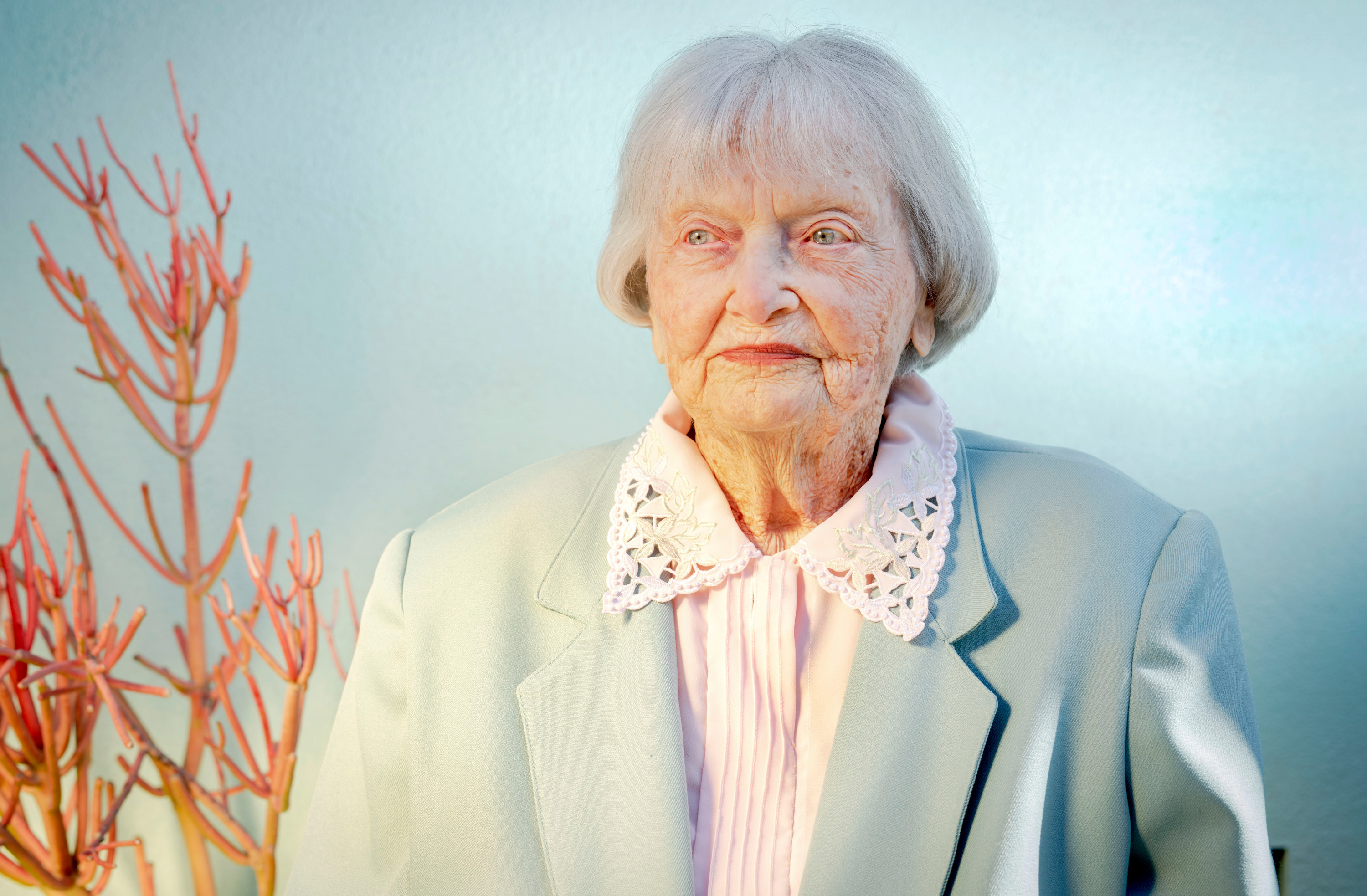Santa Barbara’s Very Own Rosie the Riveter
Women’s History Month Is the Perfect Time to Introduce Harriette Rees Azlein

“The enemy was rampant and still on the march of easy conquest,” reported the new Aircraft Year Book in 1943.
At 22, Harriette Rees was single and living with her parents on West Sola Street when she learned of a new manufacturing plant opening on the Eastside, hiring women, with good pay. She walked “right over” to the National Guard Armory on East Canon Perdido, across the street from Santa Barbara High School, from which she’d recently graduated in 1940.
The Armory had emptied out, with men being called to active duty as World War II raged across the globe. In the Armory’s vacant rooms, Lockheed Aircraft of Burbank was opening one of its 18 aircraft manufacturing plants in Southern California, fabricating parts and subassemblies for its Hudson Bomber, a favorite of the British Royal Air Force, and by license from Boeing Aircraft of Seattle, the B-17 Flying Fortress — a key fighter against German targets.
The Hudson Bomber was a two-engine, four-gun, five-man warplane, 44 feet long and 65½ feet from wing to wing. Two years earlier, it was the first aircraft to capture a German submarine. Ads from 1943 heralded it a “Sub Smasher … Lockheed’s Hudson holds the official R.A.F. … record for having smashed more subs than any other warplane.”
Rees set to work building Sub Smashers. She became a riveter, inserting 10 four-inch rivets into 15 metal sheets to hold them together, 150 rivets per day. On the other side of the metal sheets, another worker handled bucking the rivets.
“I had to hold the rivet gun carefully, with two hands, rat-a-tat-tat, rat-a-tat-tat, all day … some days I worked the drill press, making holes for the rivets … that was a dangerous job — usually a man did it.”
In another room at the Armory, women worked on subassemblies for Boeing’s B-17, a four-motored long-range bomber, which dropped more bombs than any other aircraft during World War II, with deadly results for its enemies in several war theaters.
The 1943 Aircraft Year Book explained that personnel shortages in aircraft manufacturing were met “despite the loss of … trained men to the armed services, by the broad Lockheed educational program of job training and upgrading applied to increasing thousands of women workers and to the physically handicapped….” Several hundred women worked at the Lockheed plant on East Canon Perdido Street, as well as the Vega and Douglas Aircraft plants elsewhere in Santa Barbara.
During 1943, the United States built 85,946 warplanes. On January 3, 1944, General Henry H. Arnold, Commanding General of the U.S. Army Air Force, reported that of the nation’s one and a half million aircraft manufacturing plant personnel, “about 40% of the total … are women. In no other industry has woman power been more effective. Women are giving excellent service … on the production line as first-rate welders, riveters, inspectors….” By the beginning of 1944, half of Boeing’s workers were women.
Now 98, Harriette Rees Azlein muses, “That was feminism, but I didn’t know it then. Women became more accepted in the workplace. Our roles changed; people understood we did good work. The ability to walk in, apply for a job, work hard, get good pay — it gave women courage.”
After the war ended in 1945, Harriette helped run the Redistribution Station at the Mar Monte Hotel on East Beach, which provided rest and recreation for military combat soldiers returning from overseas, immunizations, and reassignments. For 30 years, she taught elementary students at Lincoln, Wilson, Monroe, and Harding schools. She liked teaching 3rd grade the best because kids at that age are “so full of energy.”
She remembers her time as a riveter as “the most adventurous and intense job I ever had, during a war I don’t want to relive.”



